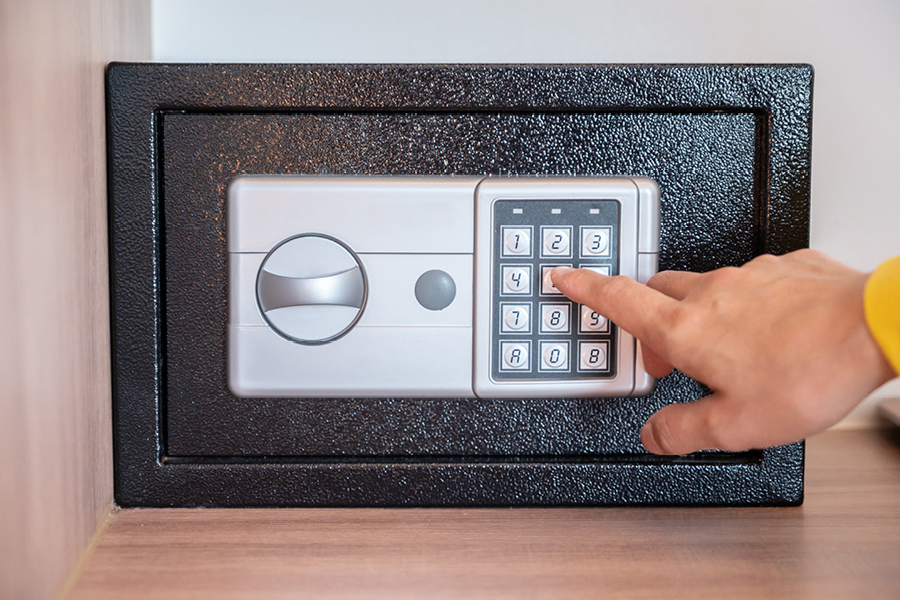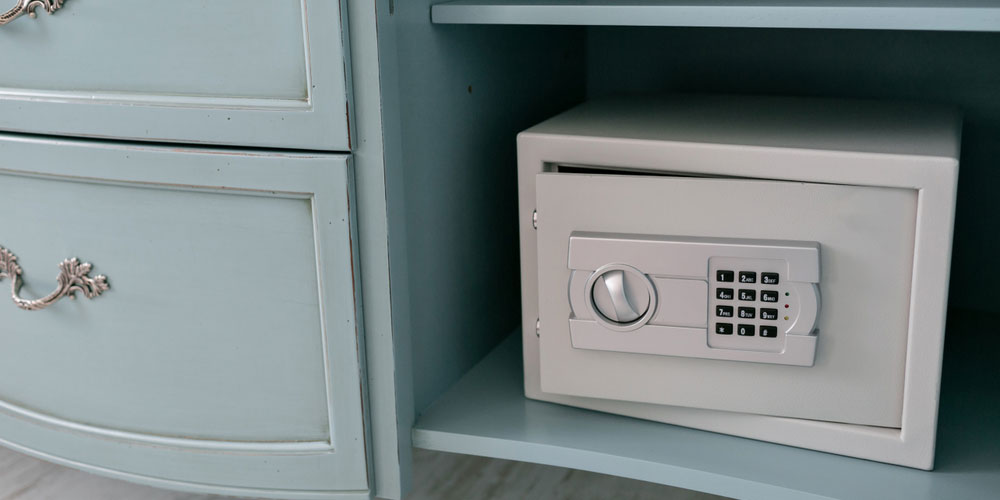Introduction
Home is our sanctuary, and securing it is a top priority. One way to fortify your fortress is by installing a safe. But where’s the ideal spot? Together, we can solve this riddle and make your house the safest location on the planet.
Why to install
Installing a safe home is a crucial step towards ensuring the security and well-being of your loved ones and possessions. In an unpredictable world where security threats loom, a fortified home acts as a shield against potential risks such as burglary, theft, and emergencies. In addition to preventing thieves, modern security systems offer homeowners the ease of remote monitoring and control and also real-time insights into the security of their property. Beyond protection, a safe home offers peace of mind, allowing residents to navigate their daily lives without constant worry.

The right space to set safe inside home
Master Bedroom Closet: A closet in the master bedroom is a common choice, as it provides a balance between accessibility and concealment. Ensure it is discreetly located within the closet.
Built into the wall: A wall-mounted safe behind a painting, mirror, or piece of furniture offers excellent concealment and security.
Home Office or Study: If you have a home office or study, installing the safe here can be practical, especially if you store important documents, valuables, or electronic media.
Floor Installation: A safe installed into the floor provides additional security, as it is more challenging for intruders to remove. Ensure it is in a location that still offers easy access.
Closet in a Spare Room: A closet in a spare room, especially one that is not frequently used, can provide a good balance between accessibility and privacy.
Under Stairs: Utilizing the space under a staircase is an effective way to conceal a safe while making efficient use of the available space.
Cabinet or Furniture Integration: Integrating the safe into a piece of furniture or a cabinet can enhance concealment while maintaining accessibility.
Hidden Room or Closet: If you have a hidden room or a dedicated closet that can be secured, it can be an ideal location for a safe.
Basement or Attic: In a secure area of the basement or attic, provided these spaces are not prone to extreme temperature or humidity fluctuations.
Custom Safe Room: For those with more extensive security needs, consider dedicating a room as a safe room with reinforced walls and a secure door.
The places not to install the safe
Obvious and visible locations: Avoid installing the safe in plain view, as this defeats the purpose of security. A safe that is easily seen may attract unwanted attention and increase the risk of theft.
Master Bedroom: Avoid placing the safe in the master bedroom’s master closet if it is the first place burglars might look. Instead, consider more discreet locations within the bedroom.
Common Areas: Avoid installing the safe in commonly used or easily accessible areas like the living room, dining room, or kitchen.
Bathroom:Avoid installing a safe in the bathroom, as it may be exposed to moisture and humidity, which can damage the contents over time.
Near Windows: Avoid placing the safe near windows, as it may be visible from outside and vulnerable to break-ins.
Underneath the bed: While it may seem convenient, placing a safe under the bed is a common and easily accessible location for burglars.
Garage (without proper precautions): If you choose to install a safe in the garage, take precautions to secure the area properly.
Areas Prone to Extreme Temperatures or Humidity: Avoid locations where the safe might be exposed to extreme temperatures or high humidity levels, as these conditions can damage the contents, especially sensitive items like documents or electronics.
Close to Entry Points Without Concealment: While it’s beneficial to have quick access to the safe in case of emergencies, avoid placing it too close to entry points without proper concealment. This prevents easy invention by intruders.
Visible Corners: Installing a safe in a visible corner of a room may make it more susceptible to prying eyes and increase the risk of invention.
Installation guide for concrete floors
Installing a safe on a concrete floor requires careful planning and execution to ensure both security and stability. Select a location on the concrete floor that meets your security and accessibility needs. Verify that the concrete floor can support the weight of the safe. Larger safes, especially those designed to be fire-resistant, can be quite heavy. Anchor the safe to the concrete floor using heavy-duty anchor bolts. Before installing the anchor bolts, drill pilot holes in the concrete using a masonry bit. Follow the manufacturer’s guidelines. Ensure that the safe is level on the concrete floor.
Installation guide for wooden floors
Installing a safe on a wooden floor involves considerations for both security and the integrity of the floor. First Before installation, assess the strength and condition of the wooden floor. Then Spread the weight of the safe evenly across the floor joists. Consider placing a load-bearing platform or plywood sheet between the safe and the wooden floor. After that, anchor the safe to the floor joists for added stability. Before installing the anchor bolts or screws, drill pilot holes to guide them and prevent splitting or cracking of the wood. Ensure that the safe is level on the wooden floor. Install felt pads or shims under the safe. Protect the safe and the wooden floor from moisture by using a moisture barrier or dehumidifier, if needed.
FAQs
Can I install a safe in my kitchen?
Yes, you can, but consider the pros and cons. Kitchens may be prone to moisture and extreme temperatures.
Is the attic a safe place for valuables?
Absolutely! The attic provides a discreet location, and with the right safe, your valuables will stay protected.
How secure are safes in closets?
Safes in closets offer a high level of security, especially when discreetly integrated with your clothing and personal items.
Can I use a bathroom safe for jewelry?
Yes, a bathroom safe can be an excellent choice for jewelry, offering protection from both theft and water damage.
Are hallway safes secure?
Hallway safes can be very secure, utilizing transitional spaces for discreet placement while maintaining accessibility.

Learn more about safe
For more information about locks, visit JUNYING. And choose the right spot, find out where to install a safe home, and let your safe become an integral part of your home, providing security without compromising style or convenience. On the website of JUNYING, you will be able to learn more.
Conclusion
trategic safe placement. Whether it’s in the bedroom, basement, or behind art, choose a location that aligns with your lifestyle and keeps your valuables secure.
